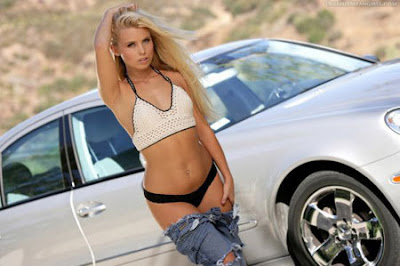Dan Knott, the surprisingly mild-mannered ringleader of DaimlerChrysler's chest-thumping Street and Racing Technology (SRT) Group, understands his job. It's to create limited-edition heart pounders for those customers who agree with the SRT philosophy that you can never have too much horsepower. SRT has successfully applied a healthy whack of power and visual pizzazz to everything from the lowliest Neon (SRT4) to the full-size Ram pickup and Viper supercar (both SRT10s).
Ramping up a hot-rod SRT Dodge Charger for sale this fall was a no-brainer. "People would question our sanity if we didn't do an SRT Charger," said Knott as he unveiled the eighth SRT model. Yes, Dan, they would. Be-cause if there is a car that needs some special attention, it is the Charger. Actually, the first thing the Charger needs is two doors, not four, judging by the buzz at the Detroit auto show, where it was revealed in January. The second thing it needs is a more graceful, more handsome, better-proportioned styling execution than the somewhat squinty-eyed, overfendered mass contrived to fit the platform of the fresh 300C upon which it was based.

SRT to the rescue with the third-best possible fix: more horsepower and plenty of it. But straight-line acceleration is strictly old school. To SRT, performance begins with power and torque, continues with superior handling dynamics and ride quality, and ends in a hurry, with braking improvement in direct proportion to acceleration achievement.
The rear-wheel-drive Charger SRT8 ar-rives from finishing school with all of that and more. We've had the pleasure of sampling this 425-hp version of the regular V-8 Hemi, bored from 5.7 to 6.1 liters, in the Chrysler 300C SRT8. We loved it then, and can't imagine any other reaction this time around. The same 300C SRT8 specs apply to the Charger SRT8: 420 lb-ft of torque peaking at 4800 rpm, a healthy 10.3:1 compression ratio, and an electronically limited 6400-rpm redline. Same gas guzzler situation, too, of course. But we're talking super-limited volume, so move on.
The Charger SRT8's five-speed manu-matic transmission sends power to the upgraded differential and axles through a heavy-duty prop shaft. The only notable difference in the Charg-er SRT8's suspension versus that of the 300C SRT8's upgraded bushings and spring rates, specially tuned dampers, and larger diameter antiroll bars, according to Knott, is its more aggressive, "Dodge-like" tuning for a sportier ride and bad-boy demeanor on the track. ABS and ESP have been tuned in that same macho spirit, and the Charger SRT8 rides a half-inch lower than the Charger R/T.

Curb weight is estimated to be identical to the 300C SRT8's at 4160 pounds, about 130 pounds more than the Charger R/T, so it seems reasonable to expect virtually identical performance numbers, unless the Charger SRT8's shape gives it an aerodynamic edge over the 300C SRT8's estimated 0-to-60-mph time in the five-second range and its 165-mph estimated top speed. The Charger SRT8's hood scoops were wind-tunnel tuned to supply cool air to the engine compartment without inflicting lift.
Almost as beautiful as the big horsepower number is the exhilarating braking performance promised by the shining red, oversized, four-pot Brembos at each wheel, which Knott says will haul the Charger SRT8 down from 60 mph to a full stop in a mere 110 feet. Ducting that's integrated in the new front fascia for the vented discs was also wind-tunnel tested to help downforce.
A key component in the ride-and-handling equation will be the high-performance Goodyear F1 Supercar rubber-245/45YR-20 in front, and 255/45YR-20 in the rear-wrapping the Charger SRT8's unique, wildly carved five-spoke, twenty-inch, forged-aluminum wheels. It's a different wheel from the 300C SRT8's, but the rubber is the same. A four-season tire will be available as an option.
As for appearances, SRT's Charger brings some relief, with its aforementioned hood scoop, a honeycomb grille insert, a wisp of a spoiler hovering above the trunk, a deep front fascia that also includes an air dam to aid lift reduction, and those all-important dual 3.5-inch exhaust tips.
The interior will have Dodge SRT instrumentation and the sort of highly bolstered seats you'd expect in your demon Dodge.
Yes, it has four doors, and no, it's still no beauty. But if the SRT8 version of the Charger goes the way its Chrysler 300C SRT8 twin goes-and there's no reason it shouldn't-it will have gone quite a distance in restoring some performance credibility to a great name that once ruled America's streets.
SPECS
Price: $39,000 (est.)
Engine: 6.1L OHV V-8, 425 hp, 420 lb-ft
Drive: Rear-wheel
0-60 mph: 5.0 sec
Top speed: 165 mph
































